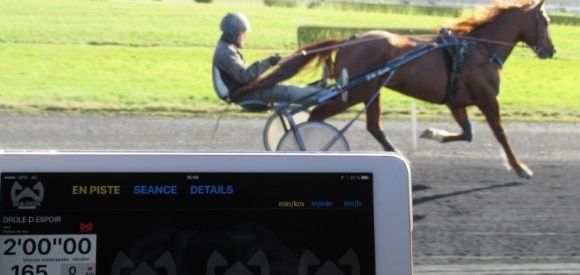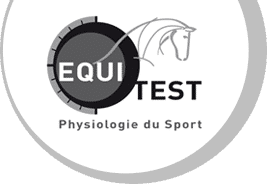With over 20 years of experience in physiological evaluation, EQUI-TEST has one of the largest equine training databases.
Principles of physiological evaluation
The principle of a physiological evaluation is to measure the cardiac and metabolic responses of an organism during a standardized exercise. This exercise is obviously adapted to the sporting discipline. The data: speed, heart rate and blood lactate are the basics of a track test.

Assessment of endurance potential
This response to the exercise is interpreted by correlating the three measured variables. For example, V200 corresponds to the speed for a heart rate of 200 bpm and V4 to the speed for a lactatemia of 4 mmol / l. These two criteria are very predictive of the stamina potential of a horse.

Fitness assessment
Physiological parameters are interpreted according to the age, training level and potential of each horse. Their longitudinal monitoring allows to objectively measure the improvement of physical condition and the correct response to the training provided.

Training load assessment
Knowing the different metabolic thresholds (aerobic / anaerobic) makes it possible to quantify the level of fatigue induced by each type of session. Training can thus be individualized according to the abilities, level of fitness and objectives to be achieved.

Training planning
Depending on the individual sports objectives and the target periods of training, training planning makes it possible to respect fundamental aspects of training such as regularity, the progressiveness of the increase in training load and or even the variability of that same training load during the season.

Prevent injury and overtraining
Under-training and overtraining are major risk factors for injury in athletes. Quantifying the workload is one of the means of preventing horse training pathologies (mainly locomotor) and also of limiting medications





